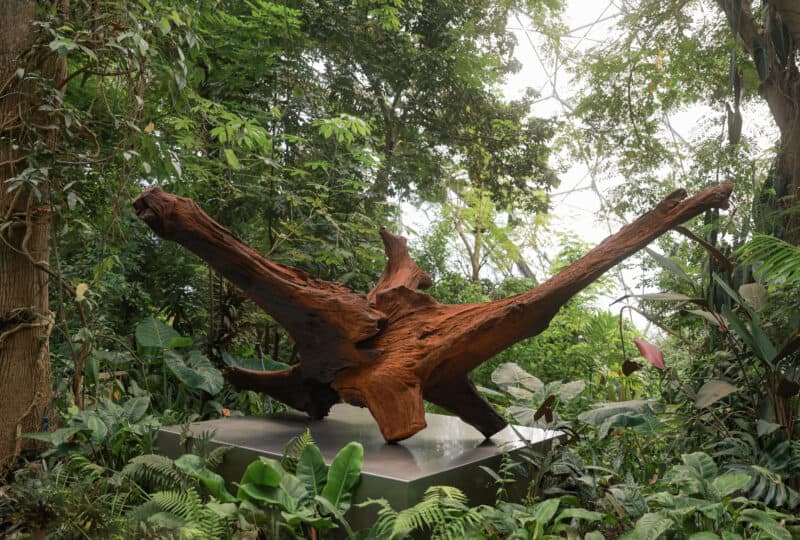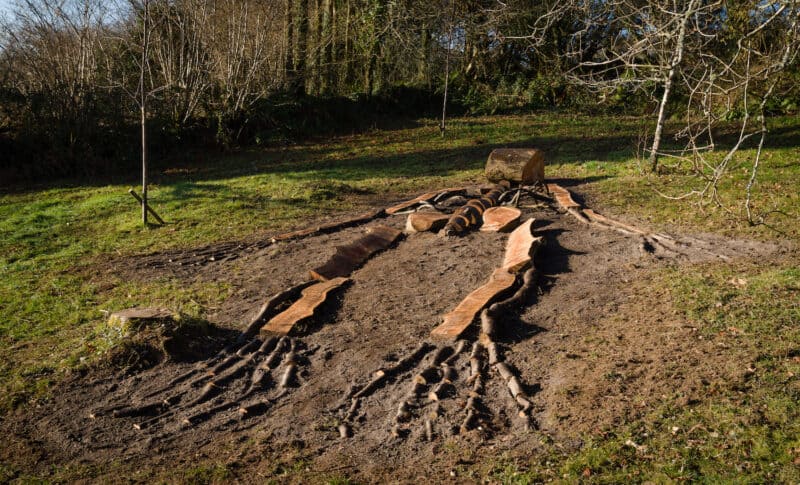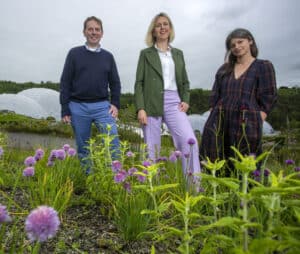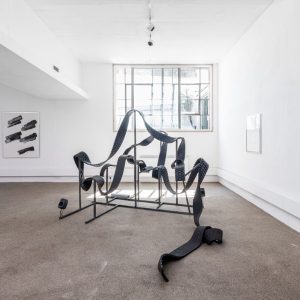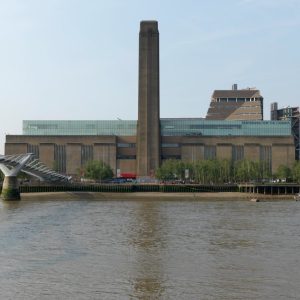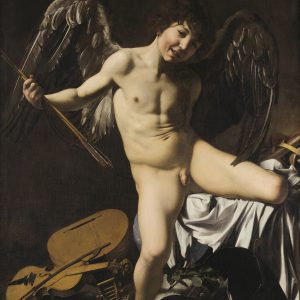
A new exhibition – Super Natural – opens this autumn at the Eden Project, bringing together a range of international artists who explore the relationship -between humans and plants, as well as how people perceive nature and their place within it in varying ways. Exhibiting artists include Ai Weiwei, Kedisha Coakley, Iman Datoo, Patricia Domínguez, Ingela Ihrman and Eduardo Navarro, with new site-specific commissions and events associated with the exhibition to be announced later this season
Plants feed, fuel and nurture us, provide the very air we breathe, and colour the fabric of our lives. Super Natural features artists who each explore and reflect on human relationships with plants, as well as on how people perceive nature – and their place within it – in varying ways. The exhibition encourages all of us to consider how different perspectives can inform and influence a shared understanding of nature and to celebrate the power of our imagination to reunite us with the natural world.
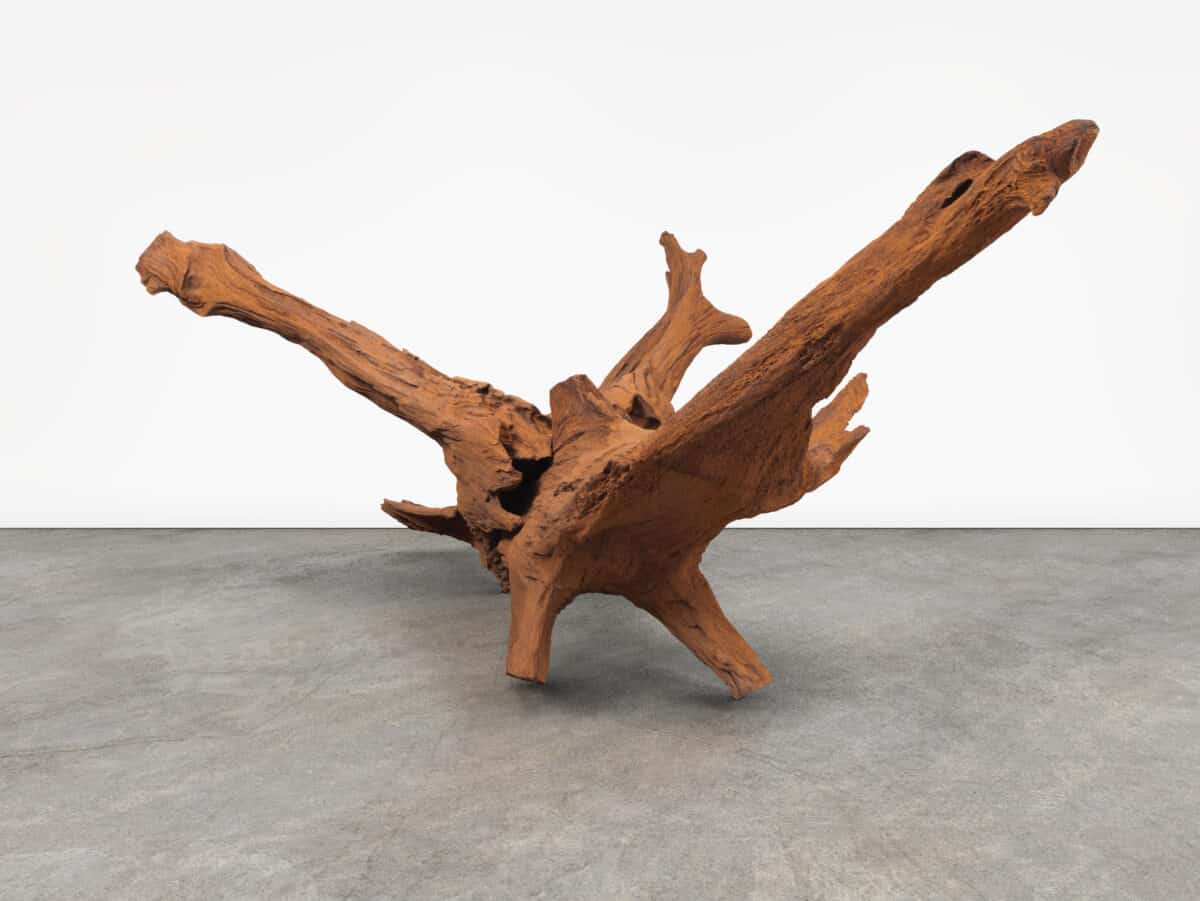
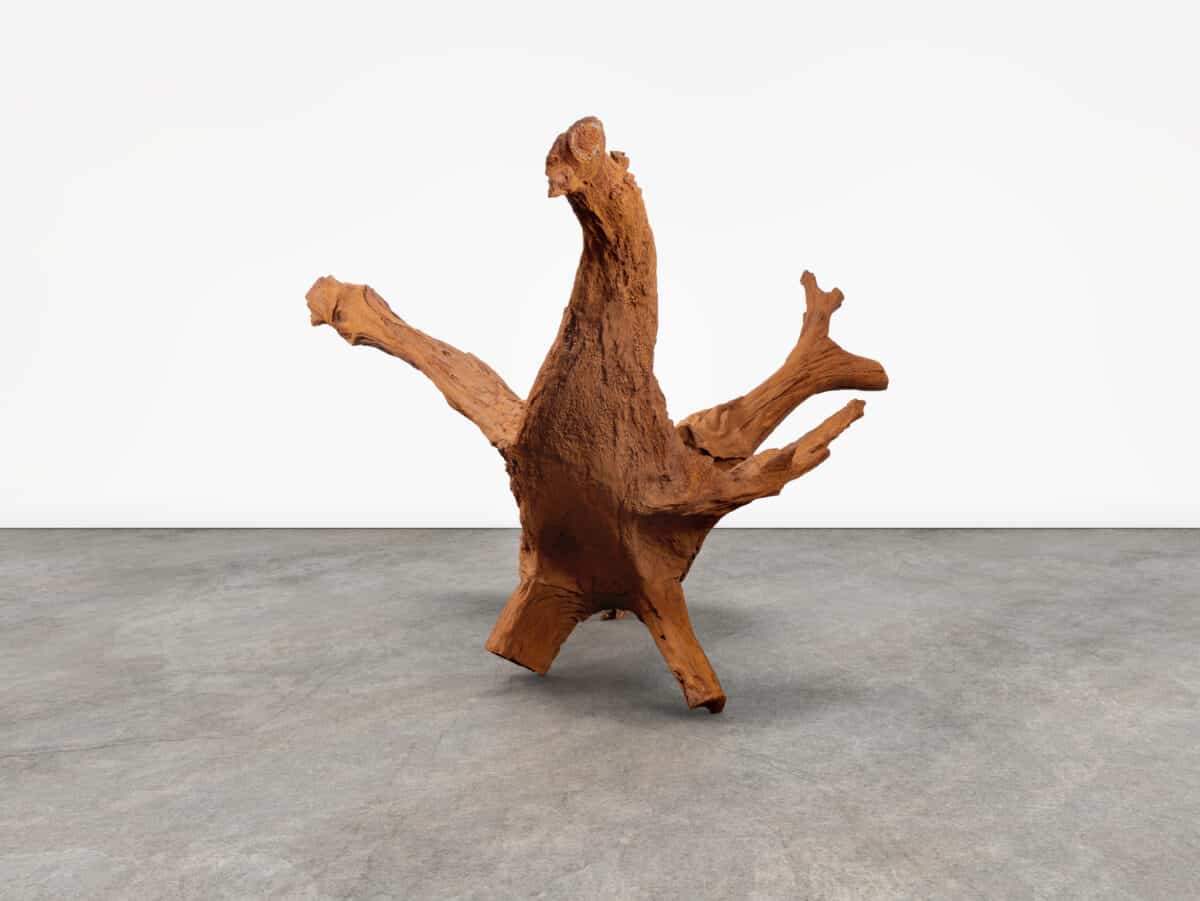
Works include Ai Weiwei’s Roots, a series of monumental sculptural works in iron, cast from giant tree roots sourced in Brazil during research and production for the artist’s survey exhibition ‘Raiz’ at OCA Pavilion, São Paulo. Some of the roots that were molded could be over a thousand years old. Fly (2019), from the series of works, will be on display at Eden. It reflects ancient cultures and man’s first tools for tree felling and woodwork and a tangible ‘uprootedness’ that mirrors the artist’s own life after being allowed to leave China in 2015, alongside the plight of refugees and indigenous populations that Ai has spent years documenting.
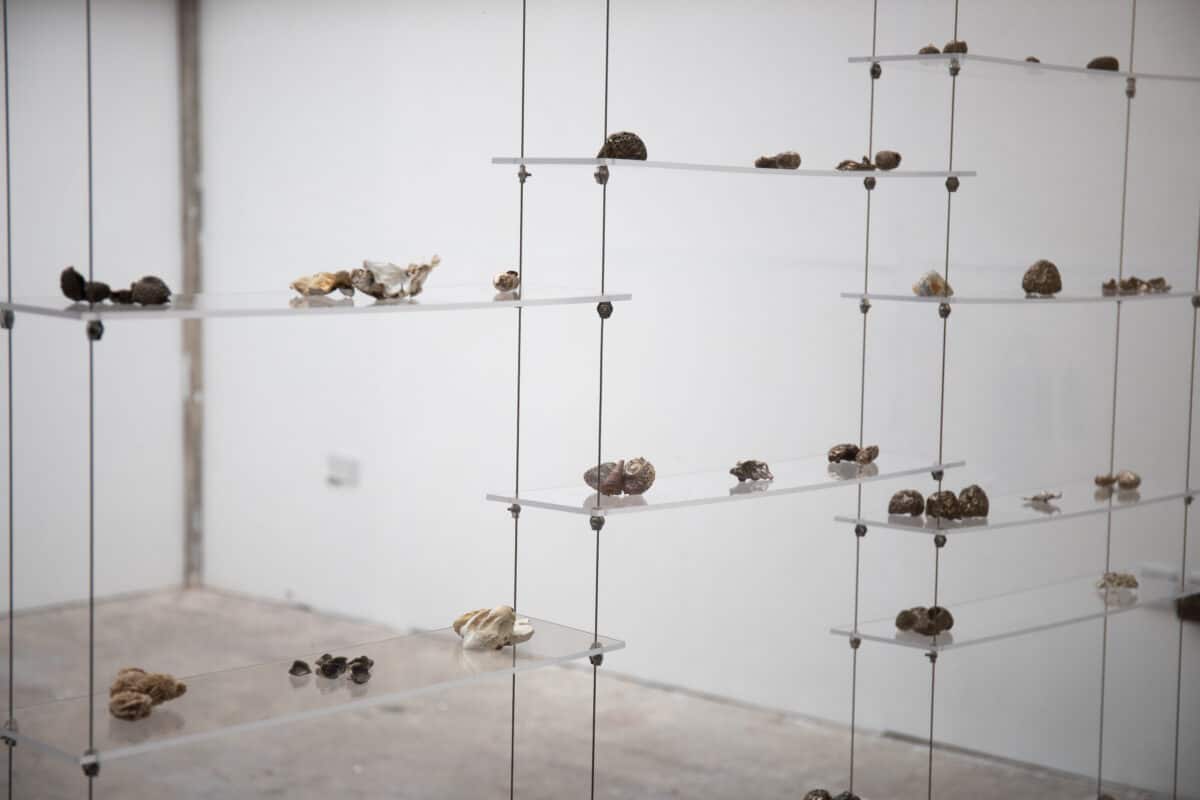
Kedisha Coakley’s Horticultural Appropriation (2022) is an archive of memories and experiences displayed through botanical and natural objects, such as volcanic rock, salt crystals, passionfruit and lychee. They form an investigation into the idea of repatriating knowledge and untold legacies. Coakley questions what is lost and what remains when botanical objects are removed from their native lands.
Iman Datoo’s work explores our tacit language, knowledge and narratives with plants and seeks to enrich our vocabulary through mapmaking, sculpture and film. Kinomic Botany (2022) is a 10-minute film that visualises a parallel world through ‘eyes’ of a potato, freeing it from its scientific and colonial ties.

Datoo’s Making a Name is an interactive and collaborative artwork composed of audio instructions inviting participants to be inspired and derive new names for plants through non-verbal methods of interacting with a potato. Participants’ individual observations will be written and collected as an evolving body of words by the artist. A Yukon Gold potato may be described as ‘yellow-as-the-tired-belly-of-the-lizard’, for example.
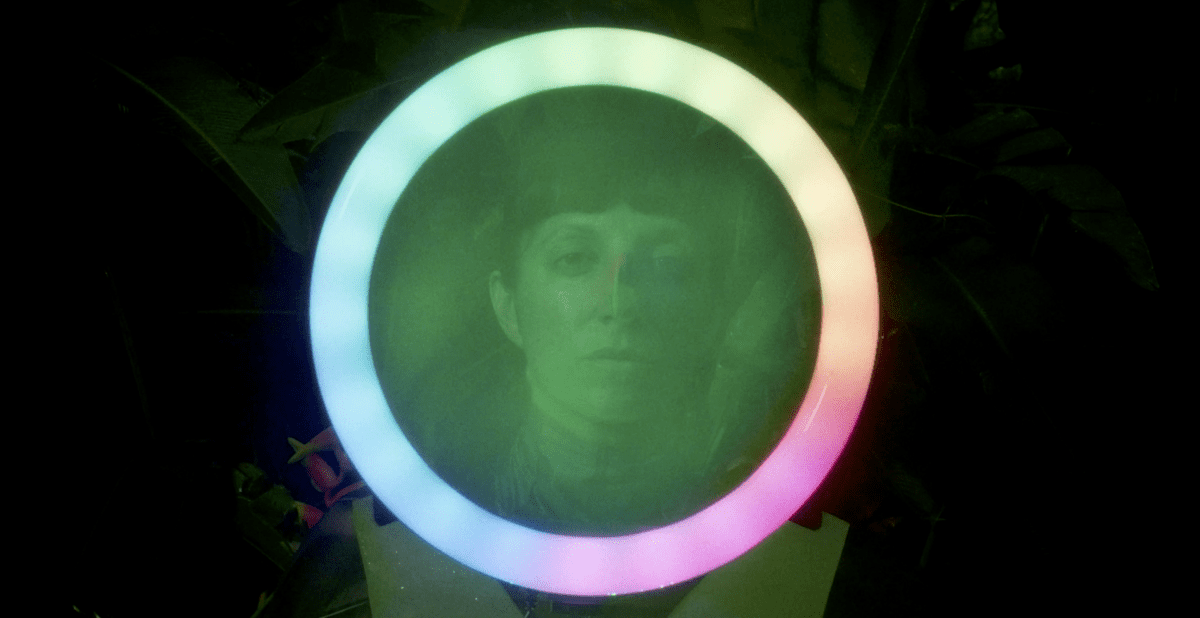
Patricia Domínguez’s digital and sculptural piece – Matrix Vegetal (2021/22) brings together experimental research on ethnobotany, healing practices and the commercialisation of wellbeing. Matrix Vegetal is a video work presented within a futuristic totem that examines some of these themes, as well as focussing on South American quantum thinking, dream fiction and organic connection technologies.
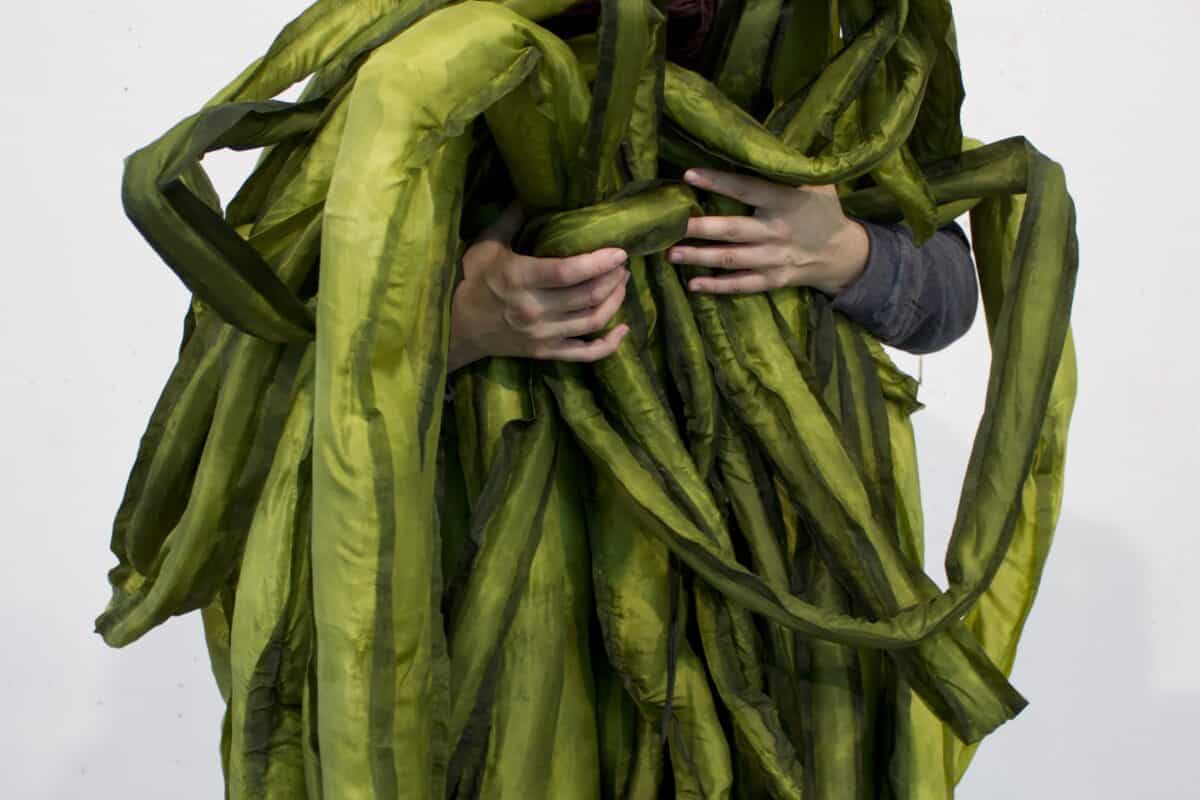
Swedish artist Ingela Ihrman has created A Great Seaweed day: Gut Weed (2019) to investigate links between intestinal and marine flora. The trailing dyed silk is based on Ulva Intestinalis – a thin, tubular algae, commonly known as ‘mermaid’s necklace’ or ‘gut weed’. Ihrman was also inspired by a quote from the diary of Victorian housewife and marine botanist Margarat Gatty (1809-1873) who had a great passion for seaweed, sparked when retreating to the coast to recover from the latest of seven strenuous pregnancies. The contents of Gatty’s diary were mostly about family and high-society life, however, on some dates, she would simply write: “A GREAT SEAWEED DAY”.
Eduardo Navarro has two pieces in the exhibition. Photosynthetics (2021) is a collection of 24 charcoal drawings on biodegradable envelopes that depict part-human, part-plant beings. Each envelope contains a London plane tree seed, with the intention that the envelopes act as “biodegradable wombs” and return the seeds to the soil. Vegetal Transmutation (2020) (a collaboration with philosopher Michael Marder) is an immersive and meditative audio piece that invites the listener to explore the works within the show as a plant might.
Every living thing on Earth is interconnected and this exhibition comprises a diversity of artworks that examine and challenge our perception of the natural world and our part in it, through a focus on our relationships with plants. It encourages us to consider what we might learn from plants, from the ‘more than human’, from reciprocal relationships in nature, and asks how different perspectives may inform and influence a shared understanding of ourselves as part of nature as opposed to apart from nature.
Whether through senses and signals or elemental cycles we are all connected to a complex and dynamic web. Today, however, some cultures – including our own for the most part – have become separated from nature, both in language and in action. The hope is that this exhibition will act as both inspiration and provocation to demonstrate that we – like all life on Earth – are just really, really (as in, super!) natural
– says Eden Project Curator, Hannah Hooks
Super Natural, Core Gallery Eden Cornwall Runs until 26th February 2023
Super Natural is curated by Misha Curson and Hannah Hooks with support from the Eden Project research team.
About the artists
Kedisha Coakley studied for her BA and MFA in Fine Art at Sheffield Hallam University. Her work challenges stereotypes and often examines expressions of Black female identity. Coakley works within the framework of a ‘social practice’ and brings a focus on the marginalized aesthetic of African Caribbean women. She explores how art and imagery can change perspectives, and be a vehicle for important conversation and change. Using sculpture, photography and printmaking, her work provokes the premise of history, race, culture and conventions of curation by reframing objects and cultural symbols.
A visual artist, designer and researcher, Iman Datoo’s work explores and examines the evolution of botanical landscapes through world-making and storytelling. Datoo studied for a Master of Architecture at the Bartlett School of Architecture and has been exhibiting her art since 2012. Working primarily with map-making, film and clay, Datoo strives to decentralize narratives around plants.
Born in Chile in 1984, Patricia Domíguez is an experimental ethnobotanist and artist. In her practice she brings together an experimental research on ethnobotany, healing practices and the corporatisation of wellbeing. Her work focuses on the transference from colonial times to neoliberal practices of extraction and overworking.
Recent solo exhibitions include: Madre Drone (Centro Centro Madrid, 2020), Planetary Tears (Yeh Art Gallery New York, 2020), Green Irises (Gasworks, London, 2019), Llanto Cósmico (Twin Gallery, Madrid, 2018), soñé@cerámicas (Sala CCU, Santiago 2017); Eres un Princeso (Pizzuti Collection Museum, Ohio, 2016), Los ojos serán lo último en pixelarse (Galería Patricia Ready, Santiago, 2016), and Focus Latinoamérica (ARCO Madrid, 2016). She has participated in group exhibitions at: Gwangju Biennale, South Korea, 2021; Transmediale, Berlin, 2021, Thyssen Museum, 2021, Momenta Biennale de l´imagen, Montreal, Canada, 2019; Meet Factory, Prague, 2019; ARCO
Madrid, 2018; SEMA, Seoul, 2018; Emila Filly Gallery, Usti nad Labem, Czech Republic, 2017; CCE Santiago, 2017; and Galería Liberia, Bogotá, 2017. She recently contributed for Season 3 st_age (TBA21), Broken Archive Series (HKW Berlin) and for the Health edition of the Documents of Contemporary Art series edited by Whitechapel and MIT Press.
Patricia earned her MFA from Hunter College New York and a Botanical Illustration Certificate from the New York Botanical Garden. She has received various grants and prizes including Simetría – CERN (2020), Beca AMA (2017), Beca Arte CCU (2015), Media Art Prize from Fundación Telefónica (2014) and 3rd Norberto Griffa Prize (2014).
She runs the experimental ethnobotanical platform Studio Vegetalista.
Ingela Ihrman (b 1985, Kalmar, Sweden) lives and works in Malmö. Her work is sparked by the strong emotions of everyday life and a desire to understand, question or express certain aspects of being alive, social and human. It is particularly the pleasures and pain that come with co-existence, autonomy, loneliness and longing for belonging that intrigues her. Her practice includes sculpture, performance, video and writing as well as collaborations within the fields of science, theater and dance. She graduated from Konstfack, Stockholm 2012.
She participated in the Yokohama Triennale (2020); Nordic Pavilion, 58th Venice Biennale (2019); 11th Gwangju Biennale, The Eighth Climate (2016). A selection of recent exhibitions are La Casa Encendida, Madrid (2021); The Giant Hogweed, Karlin Studios / Centre for Contemporary Art FUTURA, Prague (2021); Weather Report: Forecasting Future, Kiasma, Helsinki (2020); Sensing Nature From Within, Moderna Museet, Malmö (2020); The Inner
Ocean, der TANK, Institut Kunst, FHNW Academy of Art and Design, Basel (2017), and Future Flourish, Tensta Konsthall (2016).
An artist born in Buenos Aires. Recent solo exhibitions include MAC Niterói, Rio de Janeiro (2019); The Drawing Centre, New York (2018); Der TANK, Basel (2017); and Museo Tamayo, Mexico City (2016). His work has featured at Castello de Rivoli, Turin (2018); TBA21–Academy, Vienna (2017); the São Paulo Biennial (2016 and 2010); the New Museum Triennial, New York (2015); the Sharjah Biennial (2015); MALBA, Buenos Aires (2015); and Mercosul Biennial (2013 and 2009).
Ai Weiwei Born in Beijing in 1957, Ai Weiwei is a Chinese contemporary artist, activist and documentarian. Having grown up in harsh conditions due to his father’s exile, Ai has been openly vocal about corruption within the Chinese Government and uses his art to display Chinese political and social issues. His wide range of mediums allows audiences to resonate with and examine today’s geopolitical world, society and values.
In 2012, Ai was awarded the 2012 Václav Havel Prize for Creative Dissent by the Human Rights Foundation and the 2015 Ambassador of Conscience Award from Amnesty International.
After numerous restrictions, Ai was permitted to leave China in 2015 and lived in Berlin and England before settling in Portugal.

